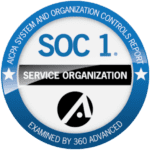In today’s fast-paced global economy, efficient supply chain management is crucial for businesses to maintain competitive advantage. One of the key aspects of this efficiency is how logistics information is integrated into different systems to streamline operations. Integration of logistics data improves visibility, enhances decision-making, and optimizes supply chain performance.
Table of Contents
- What Is Logistics Information Integration?
- Key Technologies Used in Logistics Integration
- Benefits of Logistics Information Integration
- Challenges in Logistics Data Integration
- Case Study: Real-World Application
- Conclusion
What Is Logistics Information Integration?
Logistics information integration involves the seamless connection of various data sources across the supply chain, including transportation, warehousing, inventory management, and order processing. It ensures that all stakeholders have access to accurate, real-time information, leading to enhanced efficiency and reduced operational costs.
Key Technologies Used in Logistics Integration
Several technologies facilitate logistics information integration, each playing a pivotal role in optimizing supply chain operations. Here’s a detailed look at these key technologies:
1. Enterprise Resource Planning (ERP) Systems
ERP systems serve as the backbone of logistics integration by centralizing data across various business functions, such as finance, human resources, and logistics. By integrating logistics data with other operational areas, ERP systems provide a holistic view of the supply chain. This centralization enables better planning, accurate forecasting, and efficient resource allocation, ultimately leading to reduced operational costs and improved productivity.
2. Transportation Management Systems (TMS)
TMS software specializes in optimizing freight movement. It streamlines the planning and execution of transportation activities by providing tools for route planning, load optimization, and carrier selection. TMS solutions also facilitate logistics performance monitoring through key performance indicators (KPIs), enabling businesses to improve service levels and reduce shipping costs while ensuring timely deliveries.
3. Warehouse Management Systems (WMS)
WMS technology focuses on enhancing inventory control and warehouse efficiency. These systems provide functionalities like real-time inventory tracking, order fulfillment, and automated stock replenishment. By optimizing warehouse layout and processes, WMS helps reduce errors and improve order accuracy, ultimately leading to faster order processing times and enhanced customer satisfaction.
4. Electronic Data Interchange (EDI)
EDI enables seamless data exchange between logistics partners, facilitating faster and more accurate communication. This technology automates the exchange of documents such as purchase orders, invoices, and shipping notices, reducing the need for manual input and minimizing errors. By standardizing formats and streamlining communication, EDI enhances collaboration among supply chain stakeholders and accelerates overall transaction processing.
5. Internet of Things (IoT)
The Internet of Things (IoT) refers to the network of interconnected devices that collect and share data in real-time. In logistics, IoT technologies enable real-time tracking and monitoring of shipments, providing stakeholders with visibility into the status and location of goods. Sensors and GPS devices can transmit data on temperature, humidity, and movement, allowing businesses to react swiftly to any disruptions and ensure the integrity of their products.
6. Blockchain Technology
Blockchain technology enhances security and transparency in logistics transactions. By providing a decentralized ledger that records every transaction throughout the supply chain, blockchain creates an immutable record that can be accessed and verified by all parties involved. This increases trust among stakeholders, reduces the risk of fraud, and improves accountability. Additionally, blockchain can facilitate faster reconciliation processes and ensure compliance with regulatory standards.
By leveraging these technologies, businesses can achieve effective logistics information integration, leading to improved operational efficiency and customer satisfaction.
Benefits of Logistics Information Integration
Logistics information integration brings a multitude of benefits to organizations that streamline their supply chain operations. Here’s an in-depth look at each of these advantages:
1. Real-Time Visibility
Real-time visibility is a crucial component of logistics integration, providing stakeholders—such as managers, suppliers, and customers—with continuous updates on the status and location of shipments. This enhanced transparency allows for immediate responses to any issues that may arise during transportation. For instance, businesses can proactively notify customers about delays or changes in delivery schedules, fostering trust and enhancing the overall service experience. Additionally, real-time visibility aids in monitoring inventory levels, ensuring that stock is managed effectively, and minimizing the occurrence of stockouts or overstock situations.
2. Cost Reduction
By integrating logistics information, businesses can significantly reduce costs associated with delays, inefficiencies, and errors. Utilizing advanced technologies like route optimization algorithms helps in identifying the most efficient transportation routes, thus minimizing fuel expenses and trimming delivery times. Moreover, automation in tasks such as order processing and inventory management reduces labor costs and mitigates human error. As a result, operational overhead is lowered, and organizations can allocate resources more effectively, ultimately leading to enhanced overall profitability.
3. Improved Customer Satisfaction
Timely deliveries and accurate order fulfillment are key drivers of customer satisfaction. With integrated logistics information, companies can track delivery statuses in real-time, allowing them to provide accurate delivery timelines to customers. This proactive communication not only meets but often exceeds customer expectations. Moreover, accurate order fulfillment, supported by automated inventory checks and data synchronization, reduces the risk of errors, such as sending the wrong products or incorrect quantities. Satisfied customers are more likely to become repeat buyers and recommend the business to others, driving long-term success.
4. Enhanced Decision-Making
Access to accurate, real-time data is paramount for effective decision-making in logistics. Integrated systems provide a comprehensive overview of supply chain performance metrics, including delivery times, inventory turnover rates, and order accuracy. With this information at their fingertips, managers can conduct thorough analyses, identify trends, and make informed strategic decisions. Whether it’s adjusting supply chain strategies, forecasting demand, or optimizing resource allocation, data-driven insights pave the way for improved operational effectiveness and competitiveness in the market.
5. Compliance and Security
In an increasingly complex regulatory environment, logistics information integration helps maintain compliance with industry standards and legal requirements. Automated systems ensure that necessary documentation, such as customs declarations and safety certifications, is accurately completed and readily available. Additionally, enhanced security measures, such as blockchain technology, protect sensitive transactional data against breaches and fraud. By promoting transparency and accountability across the supply chain, businesses can build strong reputations while minimizing legal risks and ensuring the safeguarding of both company and customer information.
By understanding and harnessing these benefits, organizations can optimize their logistics operations, refine their competitive edge, and ultimately achieve greater success in the ever-evolving market landscape.
Logistics Integration Data Table
| Benefit | Impact on Supply Chain |
|---|---|
Real-Time Visibility | Reduces uncertainties and enhances tracking |
Cost Reduction | Optimizes expenses through automation |
Improved Customer Service | Faster and more reliable order fulfillment |
Better Decision-Making | Data-driven insights for strategic growth |
Compliance & Security | Protects data and ensures regulatory adherence |
Challenges in Logistics Data Integration
While there are numerous advantages to integrating logistics information, organizations face significant challenges that can impede the process. Below, we delve deeper into key challenges that companies must address.
1. Data Silos
Data silos occur when information is stored in isolated systems, preventing seamless flow and access across departments. In logistics, data silos can lead to inefficiencies and a lack of coordination, as different stakeholders may rely on incomplete or outdated information. For example, if the inventory management system is not connected to the order fulfillment platform, discrepancies may arise regarding stock levels, causing delays in shipping or excess inventory. Breaking down these silos requires not only technology solutions such as APIs that enable interoperability but also a cultural shift towards collaboration and information sharing across the organization.
2. Interoperability Issues
Different logistics platforms and software solutions may lack compatibility, complicating the integration process. This lack of standardization can lead to challenges in data exchange, as communication between disparate systems may be limited or nonexistent. For instance, if a company uses separate platforms for warehousing, transportation management, and customer relationship management, consolidating data for analytics becomes cumbersome. Organizations must invest in middleware or adopt industry standards that facilitate interoperability, ensuring various systems can communicate and work together efficiently.
3. Cybersecurity Threats
As logistics information integrates across various platforms, the increased complexity can make organizations more vulnerable to cybersecurity threats. Data breaches, ransomware, and other cyber-attacks can expose sensitive information, including customer details and financial data. The rise of remote work and digital interactions further amplifies the risk. To combat these threats, businesses must adopt robust cybersecurity measures, such as encryption, multi-factor authentication, and continuous monitoring of network activity. Employee training on best practices for data security also plays a critical role in safeguarding logistic operations.
4. High Initial Investment
Implementing advanced logistics integration systems often comes with a significant initial investment in technology and infrastructure. The costs associated with acquiring new software, training employees, and maintaining systems can be substantial, particularly for small to medium-sized businesses. Furthermore, organizations may need to allocate resources for ongoing upgrades and maintenance to keep pace with evolving technologies. To mitigate these costs, companies can consider phased implementations, cloud-based solutions that reduce infrastructure spending, or partnerships with third-party logistics providers that offer integrated services.
5. Regulatory Compliance
Adhering to a complex landscape of international trade regulations adds an additional layer of challenge. Logistics operations often cross borders, requiring compliance with diverse rules concerning customs, tariffs, safety standards, and environmental regulations. Non-compliance can lead to significant fines, delays, and reputational damage. Ensuring that integrated systems are capable of managing compliance requirements requires ongoing diligence and often necessitates expert knowledge of local and international laws. Organizations can benefit from integrated compliance management solutions that streamline documentation, automate reporting, and provide real-time regulatory updates.
To illustrate the transformative impact of effective logistics information integration, consider the case of a leading freight company that embraced a cloud-based logistics integration system. This strategic move not only reduced shipment delays by an impressive 35% but also slashed operational costs by 20%. Through the seamless integration of Enterprise Resource Planning (ERP), Transportation Management Systems (TMS), and Internet of Things (IoT) tracking, the company significantly enhanced visibility across its operations, leading to more efficient freight auditing processes. Studies from MIT Supply Chain Research demonstrate that logistics integration can enhance supply chain efficiency by up to 40%.
For organizations aiming to replicate this level of success, exploring partnerships with top freight audit companies can provide tailored solutions for optimized logistics management. Notably, studies from the MIT Supply Chain Research Institute indicate that efficient logistics integration can bolster supply chain performance by as much as 40%. This compelling evidence underscores the critical importance of embracing such technologies in today’s fast-paced market environment.
Conclusion
Understanding how logistics information is integrated is crucial for modern businesses aiming to enhance efficiency and reduce costs. Leveraging technologies like ERP, TMS, and IoT ensures streamlined operations and better decision-making. Companies investing in logistics integration gain a competitive edge through improved visibility, reduced delays, and increased customer satisfaction.




